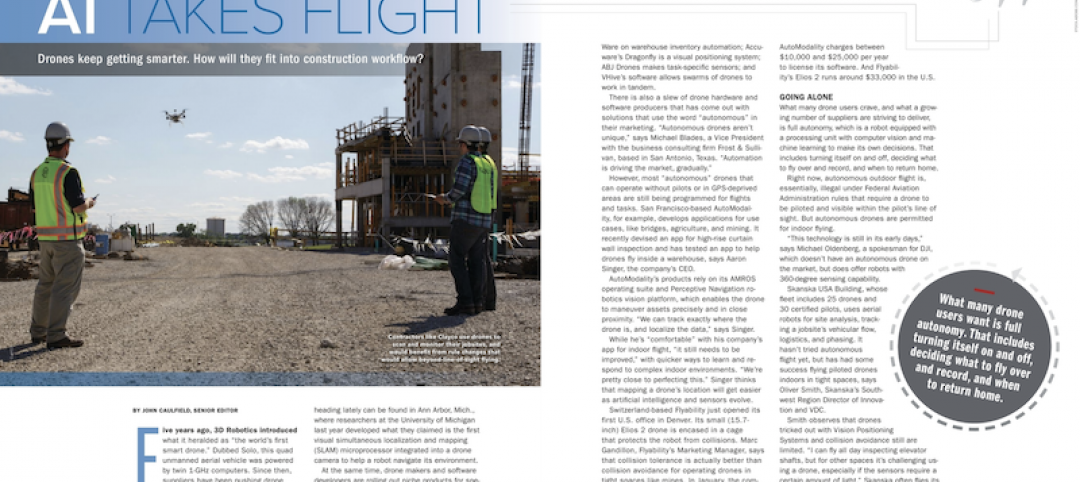For centuries, the AEC industry has clung to traditional methods and legacy processes—seated patterns that have bred resistance to change. This has made the adoption of new technologies a slow and hesitant process. Risk aversion, the industry's fragmented nature, regulatory inefficiencies, and a lack of standardization have contributed to the slow digital transformation as well.
However, increasing awareness of the benefits of digital transformation is gradually shifting AEC towards modernization. Industry professionals are realizing the impact of technology on their sector's ability to thrive in a rapidly evolving environment, promising a brighter and more tech-driven future for the field.
Why is Digitalization Accelerating Now?
The shift we’re talking about didn’t happen overnight though. Old habits die hard, especially when tradition reigns supreme. However, new trends began to disrupt the status quo, spurred by the urgent need for greater efficiency and reduced costs.
Paper-based processes, plagued by inefficiencies, led to delays, cost overruns, and quality issues too often. The industry needed a change, technology offered the solution. And the four factors below accelerated the adoption:
1. Technology Providers
The landscape of AEC-specific technology has evolved significantly in the past five years.
The adoption of software has surged, with Building Information Modeling (BIM) becoming a standard. Cloud-based construction project software is now the norm, and mobile apps have become indispensable for construction project management. Drones and aerial imaging are widely used for site inspections, surveying, and progress monitoring.
This transformation is largely due to companies specializing in construction software actively developing and marketing tools tailored to the industry.
Key tools like Procore, Autodesk, and Fieldwire have made innovation a norm. New powerful players like Fluix and Raken have entered the market, introducing competition and often focusing on specific niches, like safety inspections or daily field reporting or procurement management.

2. Industry Leaders
Forward-thinking construction companies and industry associations have recognized the potential of digital tools and processes. Related media consistently feature well-known names and major construction companies leveraging technology to improve their operations:
- Turner Construction uses data analytics to optimize construction processes and make data-driven decisions.
- Skanska employs Virtual Design and Construction (VDC) to create 3D models of their projects for better visualization and clash detection.
- Bechtel employs augmented reality (AR) to assist on-site work, overlaying digital information onto physical construction sites.
- AECOM invests in digital twin technology to create virtual replicas of physical infrastructure projects.
- Mortenson Construction embraces integrated project delivery (IPD) and lean construction methods to enhance collaboration and communication among project stakeholders.
The list goes on. These adoptions have set examples, and served as a roadmap for other companies in the industry to follow and embark on their digital transformation journeys.
3. Government Initiatives
Governments worldwide recognized the potential of digital transformation in the AEC industry. They began promoting the adoption of BIM and other digital tools to enhance infrastructure planning and development.
This promotion comes from understanding that digitally smart countries can attract international investment and be more competitive in the global marketplace, creating jobs and strengthening economics.
For instance, the U.S. established the National BIM Standard-United States (NBIMS-US) to promote BIM adoption, while various states enacted the Digital Signatures and Records Act to ease electronic document submission and storage. Other countries have also launched similar initiatives to enhance construction efficiency and productivity through digital technology adoption. Think of the BIM Level 2 Mandate and Construction Strategy 2025 in the UK, Building and Construction Authority (BCA) and Smart Nation Initiative in Singapore, National BIM Mandate in Australia, the EU's BIM Task Group and Level(s) initiatives and many more.

4. Sustainability Imperative
The growing demand for sustainability is the last but not the least factor punching companies to go more digital. With increased public awareness of environmental concerns, the AEC sector is under pressure to reduce the industry's carbon footprint and adopt more eco-friendly practices.
And digital transformation enables us to design such practices, helping construct buildings and infrastructure with greater energy efficiency, lower emissions, and sustainable materials.
Through tools like BIM, advanced simulations, and data analytics, the industry can optimize designs for energy consumption, waste reduction, and overall sustainability. New regulations, activism, and client demands for environmentally responsible projects further push AEC firms to adopt digital technologies for greener and more sustainable construction practices. This makes sustainability a significant driver in the digital transformation journey especially when it comes to big companies with the reputation at stake.
Last Word
As you see, the surge of digital transformation in the AEC industry is influenced by a variety of factors. While traditional practices have deep historical roots, new trends and behaviors contribute to the digital acceleration. The AEC sector is gradually evolving towards a more sustainable, tech-driven future, in response to the changing business landscape and public demand.
This is the first article in a three-part series on digital transformation. Click here to read part two: 4 ways AEC firms can benefit from digital transformation
Related Stories
Smart Buildings | Oct 26, 2020
World’s first smart building assessment and rating program released
The SPIRE Smart Building Program will help building owners and operators make better investment decisions, improve tenant satisfaction, and increase asset value.
AEC Tech | Oct 23, 2020
Risk mitigation: Seeing the forest and the tree
This case study highlights how new data analysis tools can be successfully leveraged to gain insights into some of the more abstract aspects of building evaluations.
Architects | Oct 14, 2020
The Weekly Show: AI for building facade inspections; designing a world-class architecture firm
The October 15 episode of BD+C's "The Weekly" is available for viewing on demand.
Smart Buildings | Oct 1, 2020
Smart buildings stand on good data
The coming disruption of owning and operating a building and how to stay ahead through BIM.
Digital Twin | Aug 27, 2020
The Weekly show: Digital twin technology and social equity in the AEC market
The August 27 episode of BD+C's "The Weekly" is available for viewing on demand.
AEC Tech | Apr 13, 2020
A robotic dog becomes part of Swinerton’s construction technology arsenal
Boston Dynamics, the robot’s creator, has about 100 machines in the field currently.
AEC Tech | Mar 30, 2020
Will 3D printing be an answer for building more affordable homes?
A project in southern California will put onsite fabrication to the test against other construction modes.
AEC Tech | Mar 23, 2020
Working from home? Don't miss out on the latest issue of Building Design+Construction
BD+C's March issue features the largest and most important technological innovations across the AEC industry.
AEC Tech | Mar 17, 2020
A tree grows in Stanford: CIFE, VDC, and where it all began
As our industry adopts VDC as standard practice, it is important to remember where these ideas began and continue to emanate from today.
AEC Tech | Mar 10, 2020
No labor. No infrastructure. No problem.
OpenSpace’s AI-based reality capture tool looks to make site documentation a completely passive experience.















